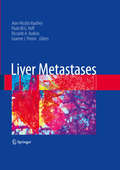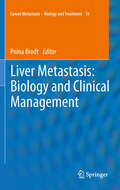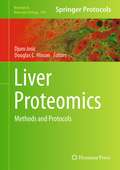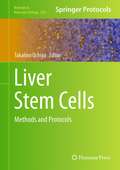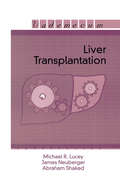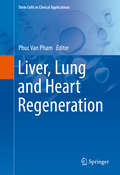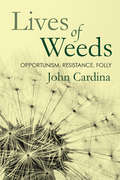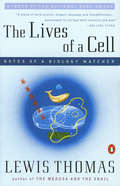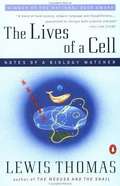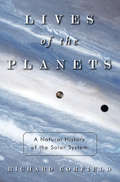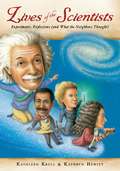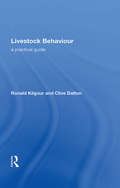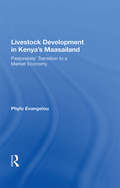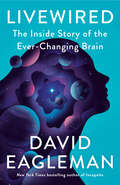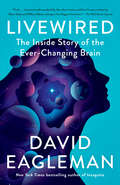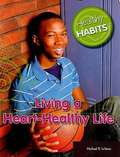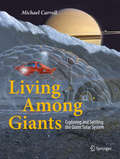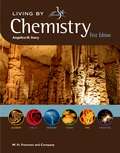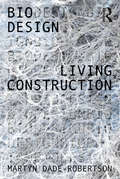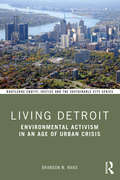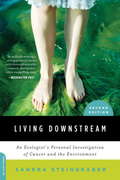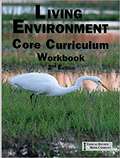- Table View
- List View
Liver Metastases
by Riccardo A. Audisio Paulo M. Hoff Jean-Nicolas Vauthey Graeme J. PostonThis book addresses the contemporary multidisciplinary management of liver metastases. Throughout the text, experience from the paradigms of colorectal cancer metastases treatment strategies are used to point to new directions in the management of liver metastases from other cancers. The book will be invaluable for surgeons in general surgery, hepatobiliary surgery, upper GI surgery, colorectal surgery, medical and clinical oncologists with an interest in liver tumours, and radiologists with an interest in liver disease.
Liver Metastasis: Biology and Clinical Management
by Pnina BrodtLiver metastases are a frequent and often fatal occurrence in cancer patients, particularly those with malignancies of the gastrointestinal (GI) tract. While recent improvements in surgical techniques and a more aggressive approach to resection of liver metastases have improved long term survival for some patients, most patients with hepatic metastases still succumb to their disease. To improve these dismal statistics, a better understanding of the biology of liver metastasis, particularly the early stages that can be targeted for prevention, is essential. Once cancer cells enter the liver, several different scenarios may occur. The cancer cells may be immediately destroyed by local defence mechanisms, they may enter a state of dormancy as solitary cells and never produce a metastasis, initiate a short-lived process of proliferation that is aborted before a metastasis is established or actively proliferate to form macrometastases. The chapters in Part I of this book provide insight into the cellular/molecular mechanisms that determine which of these scenarios prevails. Written by experts researchers in the filed of metastasis, these chapters provide state-of-the art reviews on the cellular and molecular processes that impact the early stages of the metastatic process. The unique microenvironment of the liver, its various anatomical, cellular and molecular features and the impact they have on metastasis are highlighted. In addition, the role of inflammation (pre-existing and tumor-induced), host innate and adaptive immune responses, cytokines, chemokines, growth factors and the unique molecular signatures of metastatic tumor cells are reviewed with an underscoring of the translational implications of the current state of knowledge. Against this background, the chapters in Part II of the book provide critical reviews on major aspects of the clinical management of hepatic metastases. These include imaging strategies, surgical and chemotherapeutic treatment approaches and the use of targeted biological therapeutics such as anti-angiogenic drugs as treatment modalities. By combining information on biological and clinical aspects of liver metastasis, this volume will serve as an excellent resource for scientists, clinicians, clinician/ scientists and trainees in the domains of oncology, surgical oncology, hepatobiliary physiology and radiology.
Liver Proteomics
by Douglas C. Hixson Djuro JosicThe liver is responsible for a wide range of critical functions essential to life, and is composed of several different cell types. In Liver Proteomics: Methods and Protocols, expert researchers in the field detail many of the methods that are used to study the live. These methods include the most up-to-date strategies being used to characterize the liver proteome at the global, cellular, subcellular, post translational and functional level.Written in the highly successful Methods in Molecular BiologyTM series format, chapters include introductions to their respective topics, lists of the necessary materials and reagents, step-by-step, readily reproducible laboratory protocols, and key tips on troubleshooting and avoiding known pitfalls. Authoritative and practical, Liver Proteomics: Methods and Protocols seeks to aid scientists in the further study of this crucially important organ.
Liver Stem Cells
by Takahiro OchiyaIncreasing evidence suggests that liver stem cells have the capacity to differentiate into parenchymal hepatocytes or into bile ductular cells. These stem cells may be activated to proliferate after severe liver injury or exposure to hepatocarcinogens. Stem cell replacement strategies are being investigated as an alternative approach to liver repair and regeneration. Additionally, stem cell transplantation has been shown to significantly improve liver function and increase survival in experimentally-induced liver-injury models in animals. In Liver Stem Cells: Methods and Protocols, expert researchers focus on several hepatic progenitor cells, hepatic differentiation form stem cells, bile ductal cell formation from stem cells, liver stem cells and hepatocarcinogenesi, and application of liver stem cells for cell therapy. These topics shed light on stem cell technology which may lead to the development of effective clinical modalities for human liver diseases. Written in the highly successful Methods in Molecular BiologyTM series format, chapters include introductions to their respective topics, lists of the necessary materials and reagents, step-by-step, readily reproducible laboratory protocols, and key tips on troubleshooting and avoiding known pitfalls. Thorough and intuitive, Liver Stem Cells: Methods and Protocols seeks to aid scientists in the further study of preclinical and clinical investigations that explore the therapeutic potential of stem cells in repair of liver injuries.
Liver Transplantation
by James Neuberger Michael R. Lucey Abraham ShakedThe purpose of this volume is to provide a short, didactic handbook for those clinicians (medical, surgical, nursing and others) who are involved in the care and management of people who may, are or have undergone liver transplantation.
Liver, Lung and Heart Regeneration
by Phuc Van PhamThis invaluable resource discusses clinical applications with effects and side-effects of applications of stem cells in liver, lung and heart regeneration. All chapters are contributed by pre-eminent scientists in the field and covers such topics as cell therapy in the treatment of cirrhosis and other liver, heart and lung diseases, characteristics of hepatic progenitor cells, future directions of the discussed therapies and much more. Liver, Lung and Heart Regeneration and the other books in the Stem Cells in Clinical Applications series will be invaluable to scientists, researchers, advanced students and clinicians working in stem cells, regenerative medicine or tissue engineering.
Lives of Weeds: Opportunism, Resistance, Folly
by John CardinaLives of Weeds explores the tangled history of weeds and their relationship to humans. Through eight interwoven stories, John Cardina offers a fresh perspective on how these tenacious plants came about, why they are both inevitable and essential, and how their ecological success is ensured by determined efforts to eradicate them. Linking botany, history, ecology, and evolutionary biology to the social dimensions of humanity's ancient struggle with feral flora, Cardina shows how weeds have shaped—and are shaped by—the way we live in the natural world. Weeds and attempts to control them drove nomads toward settled communities, encouraged social stratification, caused environmental disruptions, and have motivated the development of GMO crops. They have snared us in social inequality and economic instability, infested social norms of suburbia, caused rage in the American heartland, and played a part in perpetuating pesticide use worldwide. Lives of Weeds reveals how the technologies directed against weeds underlie ethical questions about agriculture and the environment, and leaves readers with a deeper understanding of how the weeds around us are entangled in our daily choices.
Lives of a Cell: Notes Of A Biology Watcher
by Lewis ThomasElegant, suggestive, and clarifying, Lewis Thomas's profoundly humane vision explores the world around us and examines the complex interdependence of all things. Extending beyond the usual limitations of biological science and into a vast and wondrous world of hidden relationships, this provocative book explores in personal, poetic essays to topics such as computers, germs, language, music, death, insects, and medicine. Lewis Thomas writes, "Once you have become permanently startled, as I am, by the realization that we are a social species, you tend to keep an eye out for the pieces of evidence that this is, by and large, good for us."
Lives of a Cell: Notes of a Biology Watcher
by Lewis ThomasElegant, suggestive, and clarifying, Lewis Thomas's profoundly humane vision explores the world around us and examines the complex interdependence of all things. Extending beyond the usual limitations of biological science and into a vast and wondrous world of hidden relationships, this provocative book explores in personal, poetic essays to topics such as computers, germs, language, music, death, insects, and medicine. Lewis Thomas writes, "Once you have become permanently startled, as I am, by the realization that we are a social species, you tend to keep an eye out for the pieces of evidence that this is, by and large, good for us."<P><P> Winner of the National Book Award
Lives of the Planets: A Natural History of the Solar System
by Richard CorfieldLives of the Planetsdescribes a scientific field in the midst of a revolution. Planetary science has mainly been a descriptive science, but it is becoming increasingly experimental. The space probes that went up between the 1960s and 1990s were primarily generalists-they collected massive amounts of information so that scientists could learn what questions to pursue. But recent missions have become more focused: Scientists know better what information they want and how to collect it. Even now probes are on their way to Mercury, Venus, Mars, and Pluto, with Europa-one of Jupiter’s moons-on the agenda. In a sweeping look into the manifold objects inhabiting the depths of space,Lives of the Planetsdelves into the mythology and the knowledge humanity has built over the ages. Placing our current understanding in historical context, Richard Corfield explores the seismic shifts in planetary astronomy and probes why we must change our perspective of our place in the universe. In our era of extraordinary discovery, this is the first comprehensive survey of this new understanding and the history of how we got here.
Lives of the Scientists: Experiments, Explosions (and What the Neighbors Thought)
by Kathleen Krull Kathryn HewittScientists have a reputation for being focused on their work--and maybe even dull. But take another look. Did you know that it's believed Galileo was scolded by the Roman Inquisition for sassing his mom? That Isaac Newton loved to examine soap bubbles? That Albert Einstein loved to collect joke books, and that geneticist Barbara McClintock wore a Groucho Marx disguise in public? With juicy tidbits about everything from favorite foods to first loves, the subjects of Kathleen Krull and Kathryn Hewitt's Lives of the Scientists: Experiments, Explosions (and What the Neighbors Thought) are revealed as creative, bold, sometimes eccentric--and anything but dull.
Livestock Behaviour: A Practical Guide
by Ronald KilgourThe book aims to bring together the essential information on animal behaviour for those concerned with the husbandry, management and welfare of farm animals. It provides information to make fuller use of labour, reduce accidents, and increase the wellbeing and productivity of farm livestock.
Livestock Development In Kenya's Maasailand: Pastoralists' Transition To A Market Economy
by Phylo EvangelouThroughout Subsaharan Africa, traditional pastoral societies are experiencing great change as ecological limitations intensify and national demands for livestock products expand. In light of these pressures, the transition of pastoralists from a principally subsistence way of life to greater involvement in market economies seems inevitable. Focusin
Livestock Development In Subsaharan Africa: Constraints, Prospects, Policy
by James R SimpsonThe nations of Subsaharan Africa experienced declining levels of food production per capita throughout the 1970s and early 1980s, particularly in the area of livestock production. Addressing that problem, the authors of this book assess in a systems context the environmental, biological, and social constraints on future African livestock development and consider prospects for improving productivity, They focus especially on changes needed in production and marketing systems, pointing to important policy considerations . The book is divided into four parts containing twenty-one chapters, each authored by one or more respective authorities in his or her field. Each section in its own way addresses the entire set of questions; topics include aspects of animal breeding and nutrition, anthropology, economics, ecology, farming systems, governmental policy, land tenure, marketing, modelling, and veterinary medicine.
Livestock Epigenetics
by Hasan KhatibLivestock Epigenetics reviews advances in the understanding of the molecular basis of epigenetic mechanisms in gene expression in livestock species. Epigenetics impact many economically important traits from growth and development to more efficient reproduction and breeding strategies. The book opens with a broad introductory chapter that discusses the importance of an understanding of epigenetics to efficient and sustainable livestock production. In subsequent chapters the role of epigenetics in specific aspects of animal production are reviewed. The final chapter provides researchers with a valuable basis for the use of comparative epigenetics research to allow research to apply advances across organisms. Livestock Epigenetics provides detailed information on this rapidly expanding field of research with contributions from a global team of experts.
Livewired: The Inside Story of the Ever-Changing Brain
by David EaglemanYou will never think about your brain in the same way again. The brain is often portrayed as an organ with different regions dedicated to specific tasks. But that textbook model is wrong. The brain is a dynamic system, constantly modifying its own circuitry to match the demands of the environment and the body in which it finds itself. If you were to zoom into the living, microscopic cosmos inside the skull, you would witness tentacle-like extensions grasping, bumping, sensing, searching for the right connections to establish or forego, like denizens of a country establishing friendships, marriages, neighbourhoods, political parties, vendettas, and social networks. It's a mysterious kind of computational material, an organic three-dimensional textile that adjusts itself to operate with maximum efficiency. The brain is not hardwired, David Eagleman contends--it is livewired. With his new theory of infotropism, Eagleman demonstrates why the fundamental principle of the brain is information maximization: in the same way that plants grow toward light, brains reconfigure to boost data from the outside world. Follow Eagleman on a thrilling journey to discover how a child can function with one half of his brain removed, how a blind man can hit a baseball via a sensor on his tongue, how new devices and body plans can enhance our natural capacities, how paralyzed people will soon be able to dance in thought-controlled robotic suits, how we can build the next generation of devices based on the principles of the brain, and what all this has to do with why we dream at night.
Livewired: The Inside Story of the Ever-Changing Brain
by David EaglemanWhat does drug withdrawal have in common with a broken heart? Why is the enemy of memory not time but other memories? How can a blind person learn to see with her tongue, or a deaf person learn to hear with his skin? Why did many people in the 1980s mistakenly perceive book pages to be slightly red in color? Why is the world&’s best archer armless? Might we someday control a robot with our thoughts, just as we do our fingers and toes? Why do we dream at night, and what does that have to do with the rotation of the Earth? The answers to these questions are right behind our eyes. The greatest technology we have ever discovered on our planet is the three-pound organ carried in the vault of the skull. This book is not simply about what the brain is; it is about what it does. The magic of the brain is not found in the parts it&’s made of but in the way those parts unceasingly reweave themselves in an electric, living fabric. In Livewired, you will surf the leading edge of neuroscience atop the anecdotes and metaphors that have made David Eagleman one of the best scientific translators of our generation. Covering decades of research to the present day, Livewired also presents new discoveries from Eagleman&’s own laboratory, from synesthesia to dreaming to wearable neurotech devices that revolutionize how we think about the senses.
Living A Heart-Healthy Life
by Michael R. WilsonLearn more about good life choices that will lead to a healthy heart and a longer life. road to a a heart-healthy life.
Living Among Giants
by Michael CarrollThe outer Solar System is rich in resources and may be the best region in which to search for life beyond Earth. In fact, it may ultimately be the best place for Earthlings to set up permanent abodes. This book surveys the feasibility of that prospect, covering the fascinating history of exploration that kicks off our adventure into the outer Solar System. Although other books provide surveys of the outer planets, Carroll approaches it from the perspective of potential future human exploration, exploitation and settlement, using insights from today's leading scientists in the field. These experts take us to targets such as the moons Titan, Triton, Enceladus, Iapetus and Europa, and within the atmospheres of the gas and ice giants. In these pages you will experience the thrill of discovery awaiting those who journey through the giant worlds and their moons. All the latest research is included, as are numerous illustrations, among them original paintings by the author, a renowned prize-winning space artist.
Living By Chemistry
by Angelica M. StacyDesigned to help all students to learn real chemistry, Living By Chemistry is a full-year high school curriculum that aligns with the new Next Generation Science Standards (NGSS) and the most rigorous of state standards. Incorporating science practices with a guided-inquiry approach, students ask questions, collect evidence, and think like scientists when learning with Living By Chemistry. BFW Publishers is pleased to offer Living By Chemistry with a value package of Sapling Learning’s interactive online problem-solving program. Learn more about this offer here or request a demonstration of the LBC and Sapling System.
Living Construction (Bio Design)
by Martyn Dade-RobertsonModern biotechnologies give us unprecedented control of the fundamental building blocks of life. For designers, across a range of disciplines, emerging fields such as synthetic biology offer the promise of new sustainable materials and structures which may be grown, are self-assembling, are self-healing and adaptable to change. While there is a thriving speculative discourse on the future of design in the age of biotechnology, there are few realized design applications. This book, the first in the Bio Design series, acts as a bridge between design speculation and scientific reality and between contemporary design thinking, in areas such as architecture, product design and fashion design, and the traditional engineering approaches which currently dominate bio technologies. Filled with real examples, Living Construction reveals how living cells construct and transform materials through methods of fabrication and assembly at multiple scales and how designers can utilize these processes.
Living Detroit: Environmental Activism in an Age of Urban Crisis (Routledge Equity, Justice and the Sustainable City series)
by Brandon M. WardIn Living Detroit, Brandon M. Ward argues that environmentalism in postwar Detroit responded to anxieties over the urban crisis, deindustrialization, and the fate of the city. Tying the diverse stories of environmental activism and politics together is the shared assumption environmental activism could improve their quality of life. Detroit, Michigan, was once the capital of industrial prosperity and the beacon of the American Dream. It has since endured decades of deindustrialization, population loss, and physical decay – in short, it has become the poster child for the urban crisis. This is not a place in which one would expect to discover a history of vibrant expressions of environmentalism; however, in the post-World War II era, while suburban, middle-class homeowners organized into a potent force to protect the natural settings of their communities, in the working-class industrial cities and in the inner city, Detroiters were equally driven by the impulse to conserve their neighborhoods and create a more livable city, pushing back against the forces of deindustrialization and urban crisis. Living Detroit juxtaposes two vibrant and growing fields of American history which often talk past each other: environmentalism and the urban crisis. By putting the two subjects into conversation, we gain a richer understanding of the development of environmental activism and politics after World War II and its relationship to the crisis of America’s cities. This book will be of great interest to students and scholars in environmental, urban, and labor history.
Living Downstream: An Ecologist's Personal Investigation of Cancer and the Environment
by Sandra SteingraberThe first edition of Living Downstream-an exquisite blend of precise science and engaging narrative-set a new standard for scientific writing. Poet, biologist, and cancer survivor, Steingraber uses all three kinds of experience to investigate the links between cancer and environmental toxins.The updated science in this exciting new edition strengthens the case for banning poisons now pervasive in our air, our food, and our bodies. Because synthetic chemicals linked to cancer come mostly from petroleum and coal, Steingraber shows that investing in green energy also helps prevent cancer. Saving the planet becomes a matter of saving ourselves and an issue of human rights. A documentary film based on the book will coincide with publication.
Living Environment Core Curriculum Workbook
by Charmian FosterUniquely complied to discuss the interaction and relationships between the different organism studied in their natural environment. <P> It covers the listed topics: <P> * Ecology and Human Impact<P> * Genetics<P> * Evolution<P> * Chemistry and Energy for Life<P> * Cells and Cells Processes<P> * Human Physiology, Reproduction, and Homeostasis<P> * Laboratory and Science Skills<P>
Living Environment Core Curriculum Workbook
by Charmian Foster William DocekalThis 2nd Edition workbook correlates with the current NYS Living Environment curriculum. The primary goal of this workbook is to provide students with essential information, strategies, vocabulary, and practice questions in order to pass the New York State Living Environment Regents. NEW to this edition: Expanded diagram for each unit. Now contains over 850 questions.
